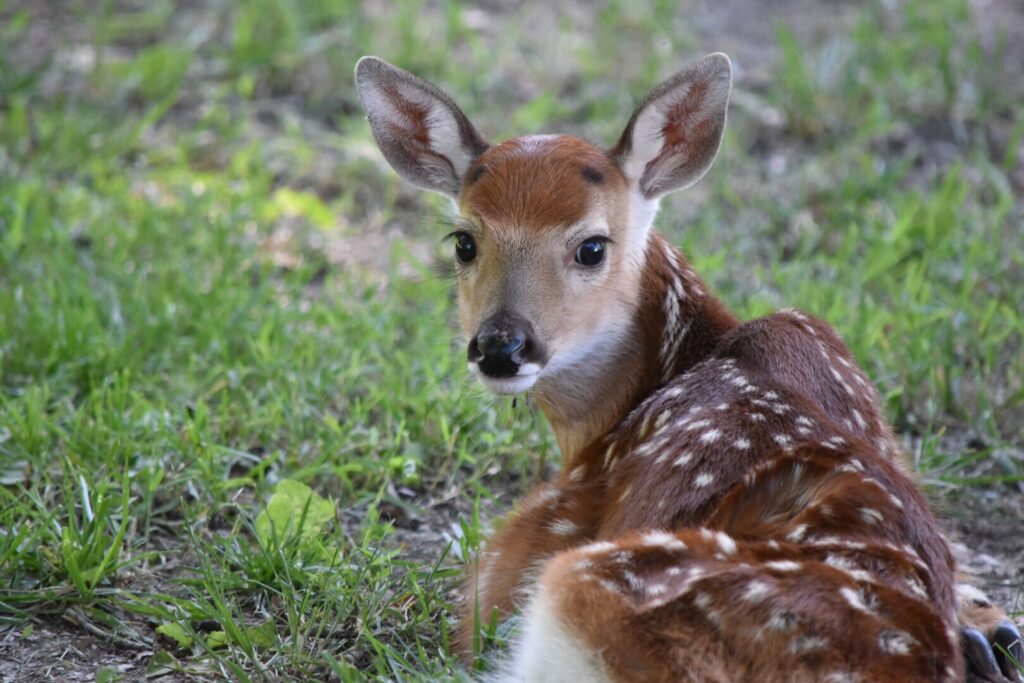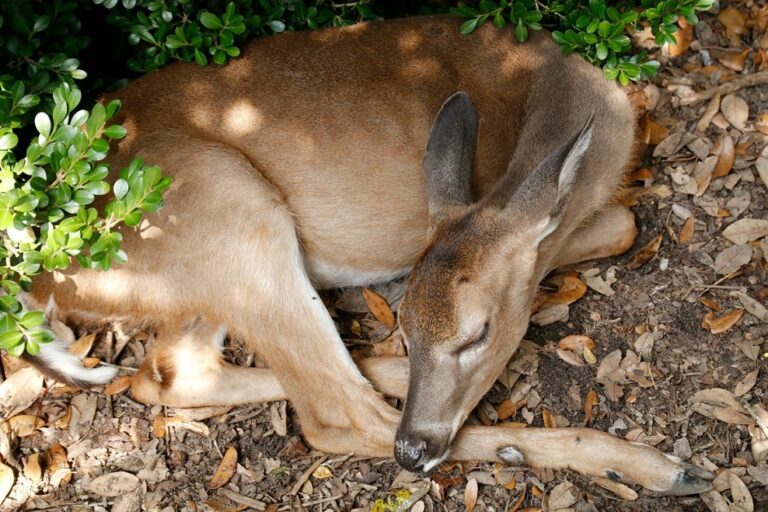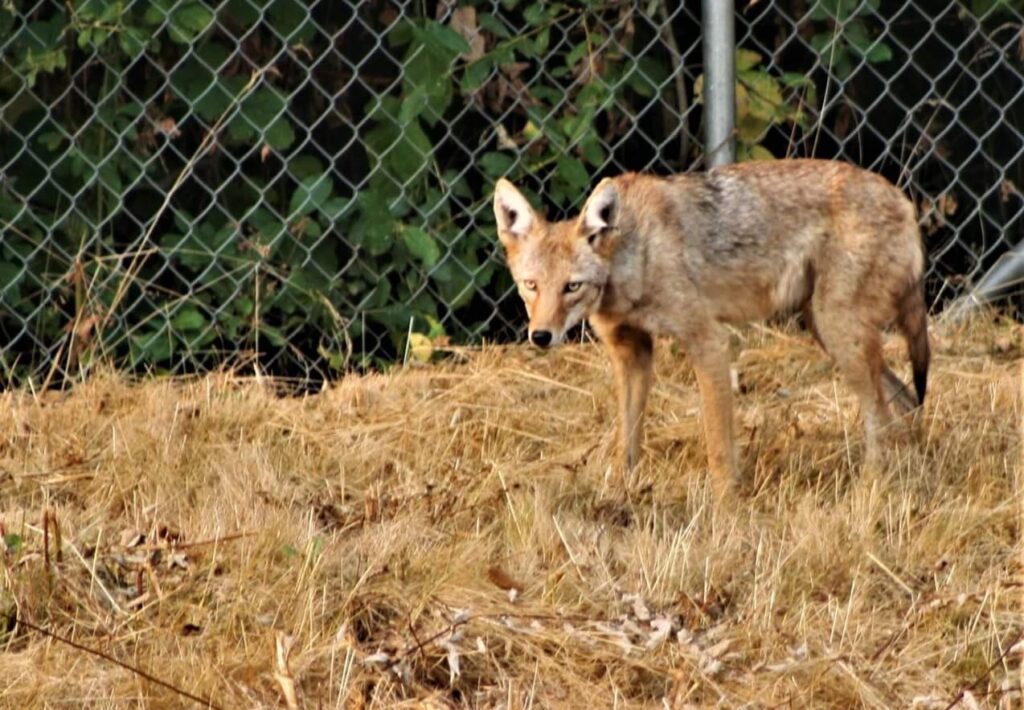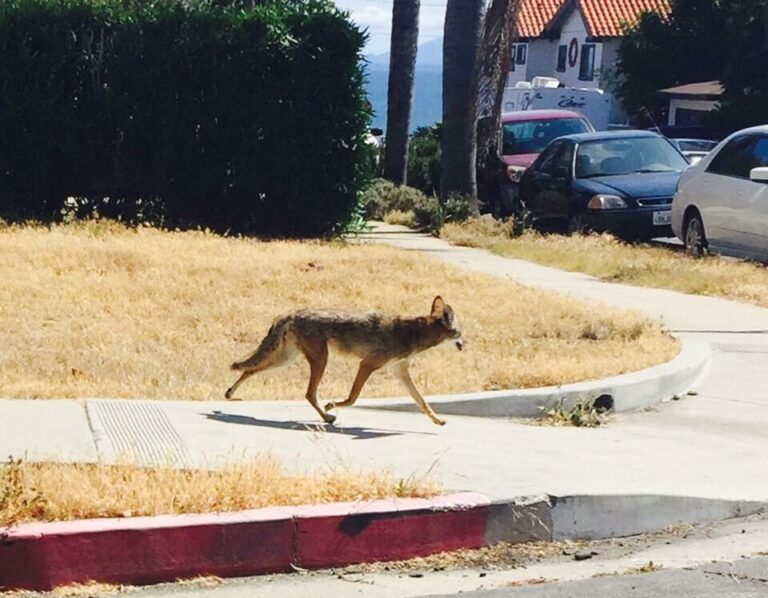 Why Do Deer Sleep In My Yard?
Why Do Deer Sleep In My Yard?
As deer are hoofed animals, they are the poorest sleepers of all species of wildlife. One of the reasons is that they are easy prey for predators. Another reason is that their bodies, unlike those of smaller prey, are too large to take refuge in protective burrows.
Deer and other wild ungulates spend all their time either awake or barely asleep. This is due to the threat that being deep in sleep can lead to a situation in which they are vulnerable to attack. Their alertness and speed are the only defense against predators.
When you notice a deer sleeping in your yard and try to approach it, it may be startled by your presence in their sleeping area. So if you spot a deer or several deer leap away, don’t get nervous. Try to remain calm and carefully step back in the direction from which you originally came from. You wouldn’t want to scare the deer into moving to another place on your property!
Read on to learn more as we talk about deer sleep habits.
Where Do Deer Normally Sleep And Rest?
On average, deer will sleep anywhere as long as they feel very safe and the place has a good supply of food resources.
Areas with thicker plant growth are selected most often as their bedding (sleeping) areas. Deer usually sleep hidden in the underbrush.
Also, as their bedding site, deer choose a flattened place that has a shape similar to their body.
Deer often bed in standing corn and graze on the clover. They can sometimes be seen venturing into food plots during the day, but even though they’re resting, they are extremely wary.
What’s more, ponds attract all kinds of wildlife, including deer. So if you have a small pond in your backyard, deer may stay close to the water source. In particularly cold or dry weather, deer need to drink more often, thus, they will visit your pond to get water. They also like the vegetation that grows around the pond. This provides them with a cover and shelter to rest and sleep.
Do Deer Sleep In The Same Place Every Night?
Deer do not sleep in a single location all year round. Most of them have a limited number of potential bedding sites within their home range. These locations are most likely determined by the degree of shading, slope and aspect of the ground, wind speed and direction, and proximity to sources of food.
By having several sleeping sites in a home range, these animals might change which ones they use whenever they change their feeding location. Female deer are particularly prone to using specific bedding sites during the fawning season.
Where Do Deer Sleep When It Rains?
Deer can sense when a storm or rain is coming, which allows them to find a suitable location in advance, where they can rest until the rain is over. These animals will rest and sleep in the same way as any other wild animals do during rain.
However, depending on the intensity of the rainfall, their habits may differ slightly. They usually feel safer making movements when the rain is steady, with very little or no wind. The moisture and raindrops on the vegetation allow them to move through the forest without making any noise.
Deer are able to adapt in the rain and are not much affected by the rain due to certain characteristics. The rain stimulates their senses and confidence, for example, they have a stronger sense of smell in the rain. Their thick fur keeps them warm, even in harsh and very cold weather conditions.
Additionally, deer bedding sites can be found in locations with a thermal cover. These areas are sheltered from the rain and wind, usually in thick shrubs, stands of conifer trees and other very tall trees.

Do Deer Lay Down To Sleep?
Deer usually lie down when they want to sleep. This is because they lose muscle control while sleeping and are not able to lock their legs to remain standing, the same way that elephants do. This usually makes the sleeping down on the ground serve a dual function – as a place to sleep or rest, and to ruminate their food.
While the deer is lying down during sleep, it typically folds its legs upwards beside its body. Its head is left raised so that the deer is able to smell and hear as much as possible. In this position, the deer will chew their food, groom themselves, rest, and sleep.
How Long Do Deer Sleep Per Day?
Deer do not spend a lot of time sleeping. This wildlife sleep in stretches of only a few minutes at a time.
Young deer play all day and sleep the night through. Adult deer try to snooze during the day as well and do their deer duties like foraging for food and feeding mainly at night.
Because deer fall prey to many carnivores, they are usually alert, especially when bedded down. Studies have shown that deer sleep an average of around 4.5 hours a day and only 30 minutes in a deep sleep state (REM). Some researchers confirm that the best description of how deer sleep is drowsiness, which means that they are neither completely awake nor fully asleep.
Deer do not restrict their sleeping periods to nighttime, but alternate bedding with feeding and ruminating (i.e. chewing their food) throughout the 24-hour cycle.
Do Deer Sleep Together?
Deer are social animals that travel, rest, and sleep together as a family. Does (female deer) stay and sleep with their offspring. Sometimes a doe that has no fawns might be spotted alone, and also bucks (male deer) can often go their separate ways, especially during the rut. But overall, it is far more common to see deer in groups, especially does which typically travel in family groups.
During the cold season, particularly in winter, does often form into larger bands with their offspring, and sometimes even the offspring of the offspring for a multi-generation family group, where they sleep together to keep them warm. Bucks, on the other hand, stick in bachelor groups for the most part of the year.
During the winter and times of deep snow cover, multiple deer will bed together. They create mass bedding sites where there is sufficient protection from the elements.
The highly skilled and experienced technicians at Westchester Wildlife can get rid of deer on your property using safe, quick, and effective methods of trapping and removal. So if you have a deer problem, contact our wildlife specialists today for a free quote!
 Is It Normal For Coyotes To Come Out During The Day?
Is It Normal For Coyotes To Come Out During The Day?
Are you wondering whether coyotes come out during daylight hours? Well, contrary to what many people believe, coyotes are diurnal by nature, which means they are active during the day.
More and more coyotes are creeping into people’s neighborhoods to search for food, and coyote sightings are frequent, especially during the wintertime. Thus, it is not bad, but it’s perfectly normal to see coyotes come out in the daytime.
However, the nocturnal or crepuscular type of coyotes is active at night, dawn, and dusk). They have altered their circadian rhythm and have more nocturnal habits to evade human conflict whenever they reside in close proximity to humans in cities and urban areas. They will lie in caves, trenches, or rock crevices throughout the day and only come out when it’s dark.
Read on to explore more on the behavior of coyotes.
What Time Do Coyotes Come Out And When Are They Most Active?
Coyotes could be seen at any hour of the day and night. However, they are most active between dawn and sunset. At night, when they engage with other coyotes, you will hear them howl incredibly loud.
As there is less daylight during the winter, they are most active, and this is when most juvenile coyotes depart their parents and seek new homes.
They do not have a predetermined time when they will appear. This period will vary based on the amount of sunlight and the habitat of the coyote. They could emerge significantly earlier at dawn and dusk in regions receiving less daylight. In other areas, they begin appearing in the early evening as the sun starts to set.
Coyotes found in urban spaces tend to have fewer opportunities during the daytime, as they are close to humans. Those that have their habitat in rural areas, however, are highly active throughout the day as the limited human population offers greater hunting opportunities.
When And Where Do Coyotes Sleep?
Unlike most animals, coyotes are unbothered even if it rains while they are asleep. This is, however, dependent on the location and weather conditions at the time of rain.
During summer, they stay in place and do not take shelter. Male coyotes select a bedding site that has proper drainage and is elevated. As defensive cover for their dens, mother coyotes usually prefer shrubs and thick leaves.
Coyotes sleep in dens in urban areas, primarily in parks, golf courses, old building ruins, drainage pipes, and more. These dens are usually ones that other creatures like badgers and skunks have already dug out. They take it over and enlarge it to accommodate themselves inside.
Coyotes love desert climate because of plenty of prey, including snakes, raccoons, rodents, birds, and land for shelter. To outline their territory, they spray urine. The coyotes make burrows in the damp sand and sleep there.
Owing to the hard winter climate, coyotes love sleeping in covered spaces but go out to search for food. Winter is a mating and breeding season for this wildlife, thus, they seem to be more active and conspicuous.
Summer is the coyote’s best season since it provides abundant shelter, food, and hunting potential. During summer, these animals prefer to sleep in open spaces, under direct sunlight, to escape bugs and capitalize on the cooling breezes. As the temperature becomes hotter, they seek shelter in shaded areas.
However, when a coyote sleeps, it moves around a lot, lifting its head to look around before spreading out to sleep again. It constantly evaluates the surroundings for any threat or movements and takes appropriate action.

Where Can Coyotes Hide During The Day?
Coyotes hide in covered open areas, raised grounds, or in dens during the day. Dens are most commonly seen in parks and forest areas, shrubbery, preserves, golf courses, and other such regions. These are difficult to come by in urban areas.
These animals also rest in rocky areas and locations where there are fewer humans or predators like wolves throughout the day. They can also use their dens throughout the breeding season. Otherwise, a coyote may rest in a shelter or out in the open during the day.
How Can You Tell If Coyotes Are Nearby?
– Howling
Coyotes tend to announce their presence by howling at night, or sometimes during the day. They howl in packs to alert other groups that their area has been conquered. The same sounds may also aid in their bonding, or, who knows, it may just feel great for them.
Other noises, including barking and whining like a small dog, could also be observed when coyotes are nearby.
– Scats
Like other animals, when coyotes are nearby, they often leave unwelcome gifts behind – feces on the ground. Unlike feces from a dog or another animal, the coyote scats are often filled with hair and bones from their meal. These droppings are usually formed like ropes and are used to establish territorial limits.
– Tracks
You can spot coyote tracks in the muddy terrain as well as dry sand. Although you can easily confuse their tracks with those of a large dog, the coyote strides are relatively longer. What’s more, they move in more direct lines.
– Dead Animals
Lastly, coyotes do not always consume the entire animal. The meal remnants that coyotes leave behind are usually strong evidence of coyote presence. These can include rabbit or rat carcasses, as well as sheep and domestic goats.
Even though coyotes do not usually pose much of a threat to people, it is advised to call a wildlife control professional as soon as you spot a coyote on your property.
Our experienced technicians at Westchester Wildlife will assess your coyote problem, and then quickly and safely trap and remove the animal.
Don’t wait – call our experts for all of your coyote control needs in Westchester, Dutchess, Putnam Counties, NY, and Fairfield County, CT.
